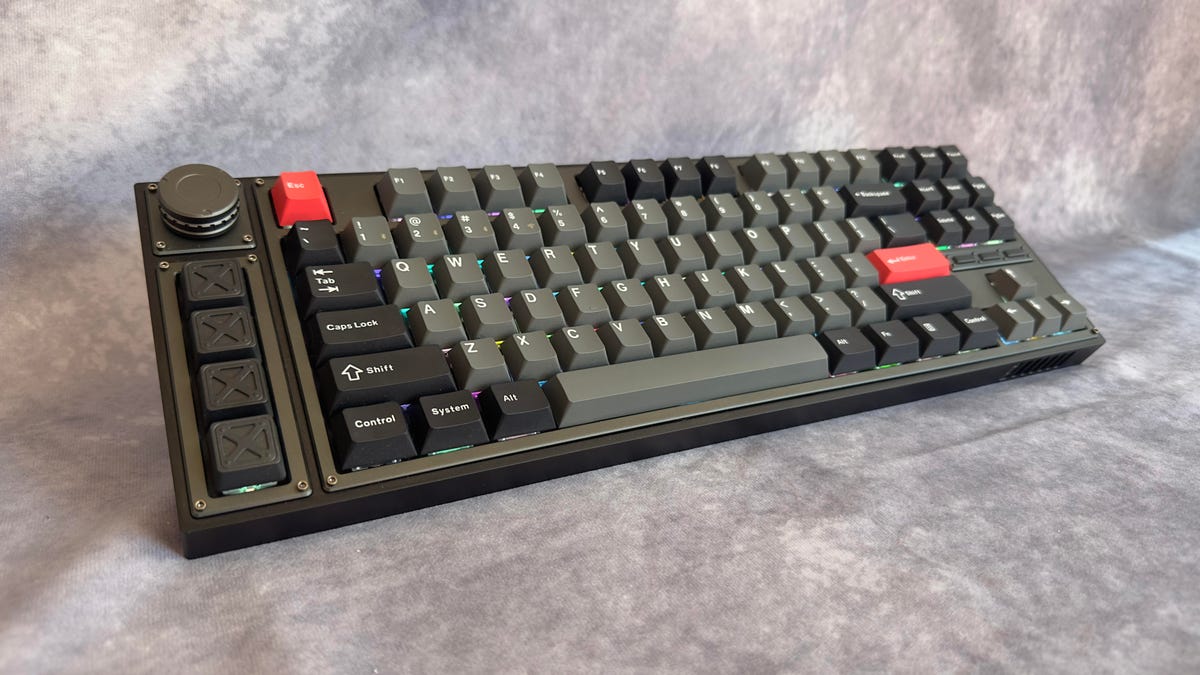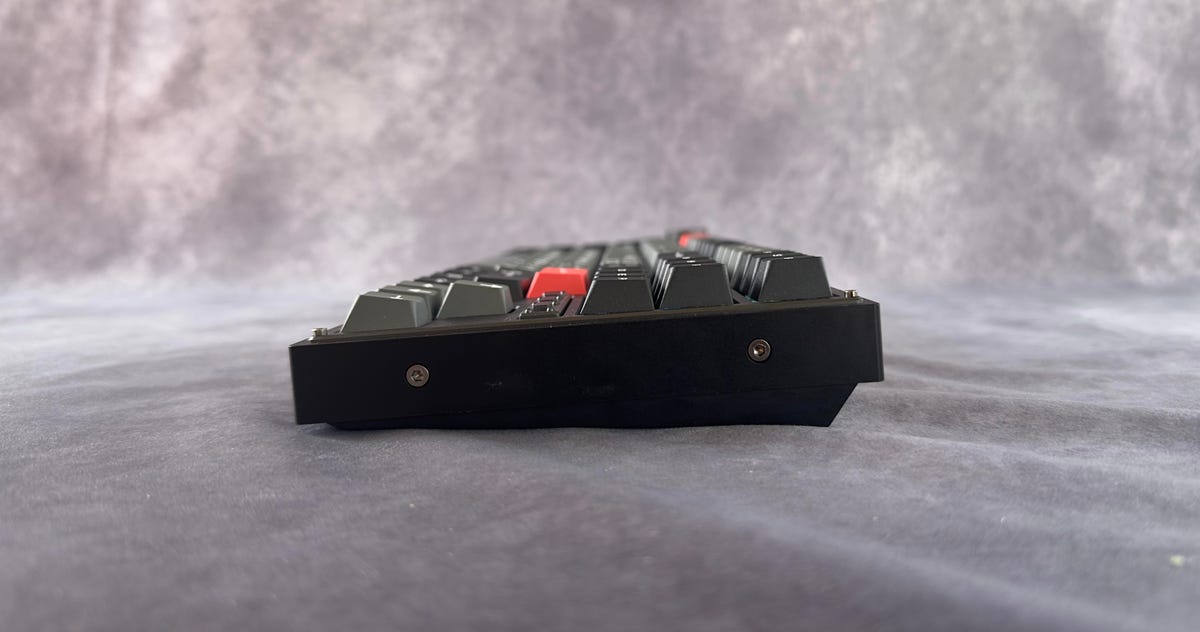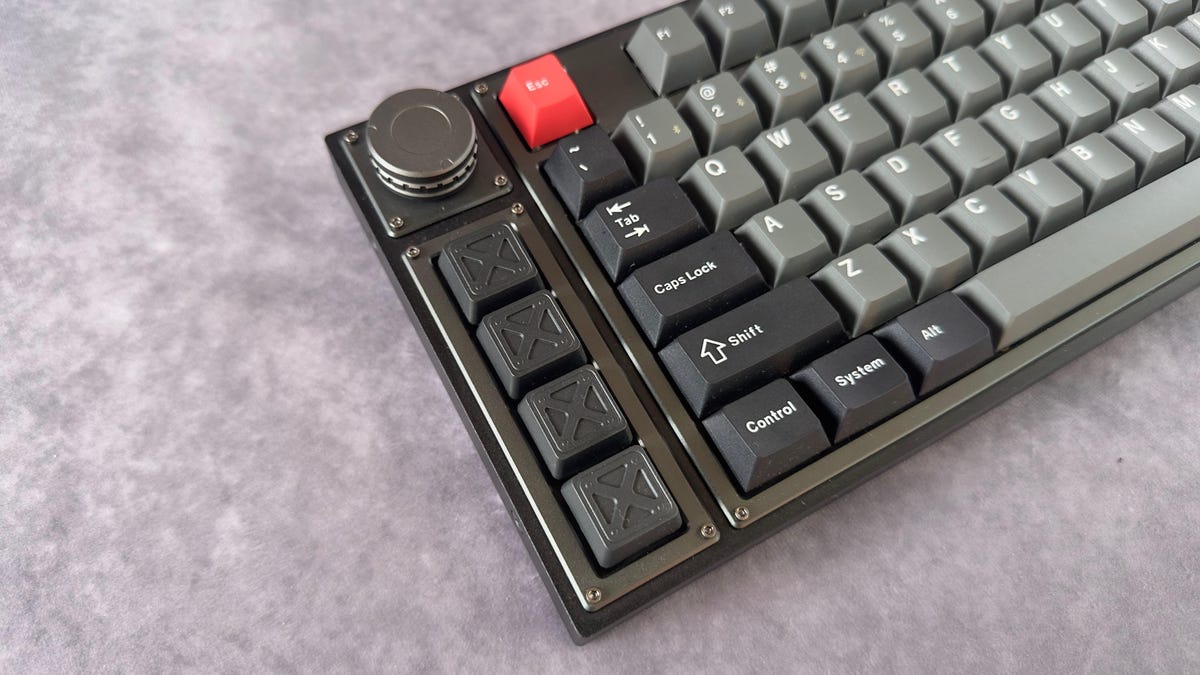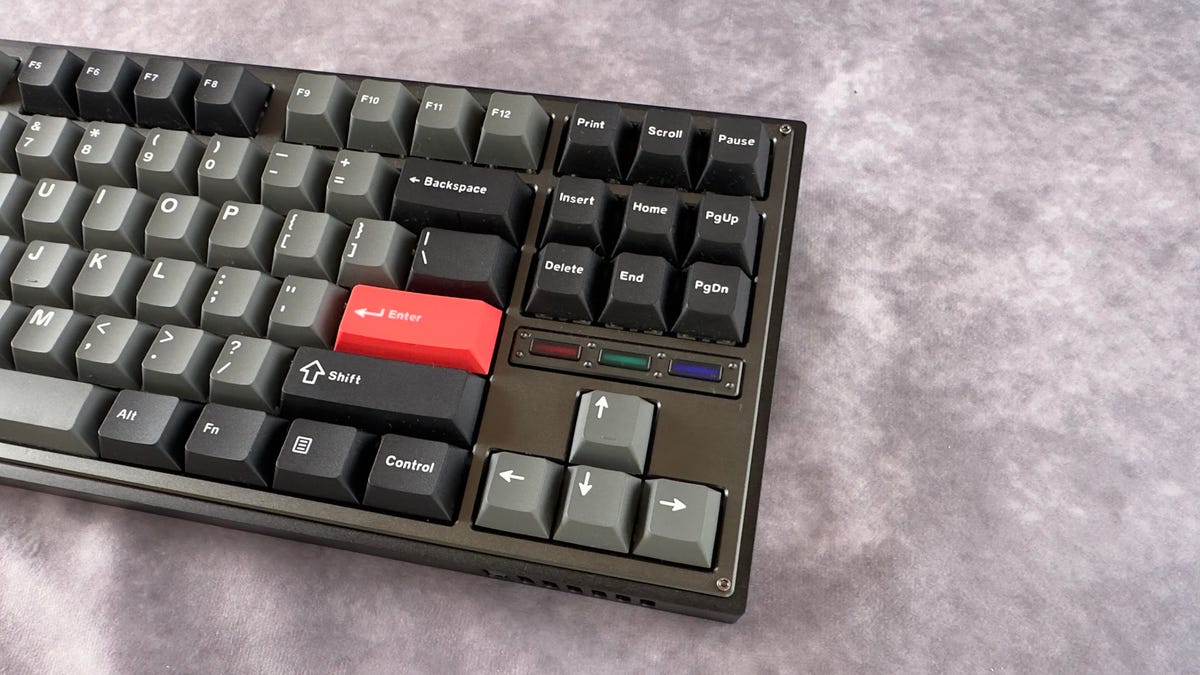Keychron has carved out a nice spot for itself in the custom mechanical keyboard market. But its keyboards are more for typing than gaming. Enter Lemokey, a gaming-focused sub-brand, and its first wireless custom mechanical keyboard, the L3. At its heart, the Lemokey L3 is a Keychron Q3 Pro with multipoint Bluetooth and 2.4GHz wireless for reduced latency when gaming and improved screw-in stabilizers that help reduce rattling in keys like the space bar, Enter and Shift key. Its design is very similar to the Q3 Pro but feels more refined with a modular look.
You can preorder a fully assembled or barebones L3 in black, blue or silver on both the Lemokey and Keychron websites. You’ll also be able to choose among Lemokey exclusive Gateron Jupiter Red (linear), Brown (tactile) or Banana (tactile) switches and the company’s Cherry-profile double-shot keycaps.

Design
The L3 model we received for review is the fully assembled version in black with Jupiter Brown switches. It’s a sturdy 80% keyboard in the body of a 96% keyboard. By “sturdy,” I mean it’s pretty much a heavy slab of metal — it surely looks like one from its side profile — that you won’t have to worry about sliding around often. With caps, switches and its full CNC-machined aluminum frame, it weighs around 4.4 pounds. It’s also available barebones with no switches or key caps.
Its bottom has a simple, stylish industrial design with three Xs spanning the entire length. But picking up the keyboard to show it off isn’t likely something you’ll find yourself doing too often with its heavy weight. The Lemokey L3’s larger footprint can be attributed to its row of macro keys and knob on the left, stretching the keyboard to 15.8 by 5.4 inches. That’s larger than most 96% keyboards.

Because of this, I would catch myself naturally going for the non-existent number pad when using this keyboard for work. To use the L3 for gaming, I had to move it to the left side of my extra-large mousepad to free up space for the quick, large mouse swipes that come with playing first-person shooters like Call of Duty or Apex Legends.
At the back of the keyboard is a USB-C port and a switch to toggle between Bluetooth, wired and 2.4GHz wireless connections. (The 2.4GHz wireless option isn’t available with the Keychron Q Pro keyboards.) If you expected there to be a slot to tuck the 2.4GHz receiver into the keyboard somewher, it’s not there. You’re just left with a very small, free-range USB receiver. So put it somewhere safe so you don’t lose it if you want to game wirelessly.
Above the arrow keys sit three indicator lights. The first, or furthest left, indicates charging status (red when charging, green when fully charged). The second indicates wireless connection (blinking blue when pairing via Bluetooth, of course, or green when switching to the 2.4GHz connection). And the third light indicates when Caps Lock is on with a blue light.
Lemokey’s L3 sits at a slight incline similar to Keychron’s Q3 Pro but not as high as other aluminum-bodied Keychron keyboards like the Q2, which I’d prefer. But strangely, it works for the better because of the ergonomics of the keyboard, overall.

Gaming, typing and customizing macros
Gaming on the L3 is much better than I’ve experienced with other gaming keyboards from the likes of Corsair, Razer or HyperX. Cherry-profile keycaps sit lower than others, requiring less finger movement and, in turn, allowing you to play longer. The keyboard is compatible with QMK/VIA open-source software, making it easy for enthusiasts to record macros, remap keys and customize the L3’s lighting. If you’re new to using the software, it’s a fairly short learning curve as everything is fairly straightforward.
Typing on the Jupiter Brown tactile switches felt great as there’s a step in actuation, letting you physically know that you pressed each key. I normally prefer linear switches for their smoother, quieter typing, but the double-gasket mount, improved stabilizers and layers of foam in this keyboard help eliminate a lot of the case ping.
The knob and row of customizable macros on the left side feel more natural than if they were on the right. When gaming, your hand sits on WASD for the most part, so turning a knob close to those keys can be done instantly. Whereas, when the knob and macros are on the right side, you must either leave your mouse or reach across the keyboard.

Battery life
The L3’s 4,000mAh battery is rated for up to 200 hours using its 2.4GHz wireless connection with the lighting turned off. Switching to Bluetooth gets you up to 300 hours of use, according to Lemokey’s site. Also, the keyboard’s 1,000Hz polling rate is available only with the wired and 2.4GHz connection; Bluetooth is 90Hz.
Out of the box, I only had to charge the L3 once after a couple of days of gaming and work. It wasn’t an issue for me since I prefer a wired connection for gaming anyway, but I did notice that it took almost 5 hours for the green indicator to appear and let me know the keyboard was fully charged.

Verdict
Overall, the Lemokey L3 is a well-built premium gaming keyboard that’s crafted for longer and better gaming sessions. Its larger footprint might discourage some, but its side panel with a knob and macro keys is a worthy use of space. I just wish there was a slot on the keyboard for the 2.4GHz dongle so I wouldn’t have to worry about losing it when it’s not in use.
With a solid aluminum body, its barebones price of $194 is on par with other wireless mechanical keyboards on the market. This keyboard becomes a steal when you purchase it fully assembled for $214, just $20 more; Gateron Jupiter switches cost $31 alone, and keycaps can range from $30 to $200.
